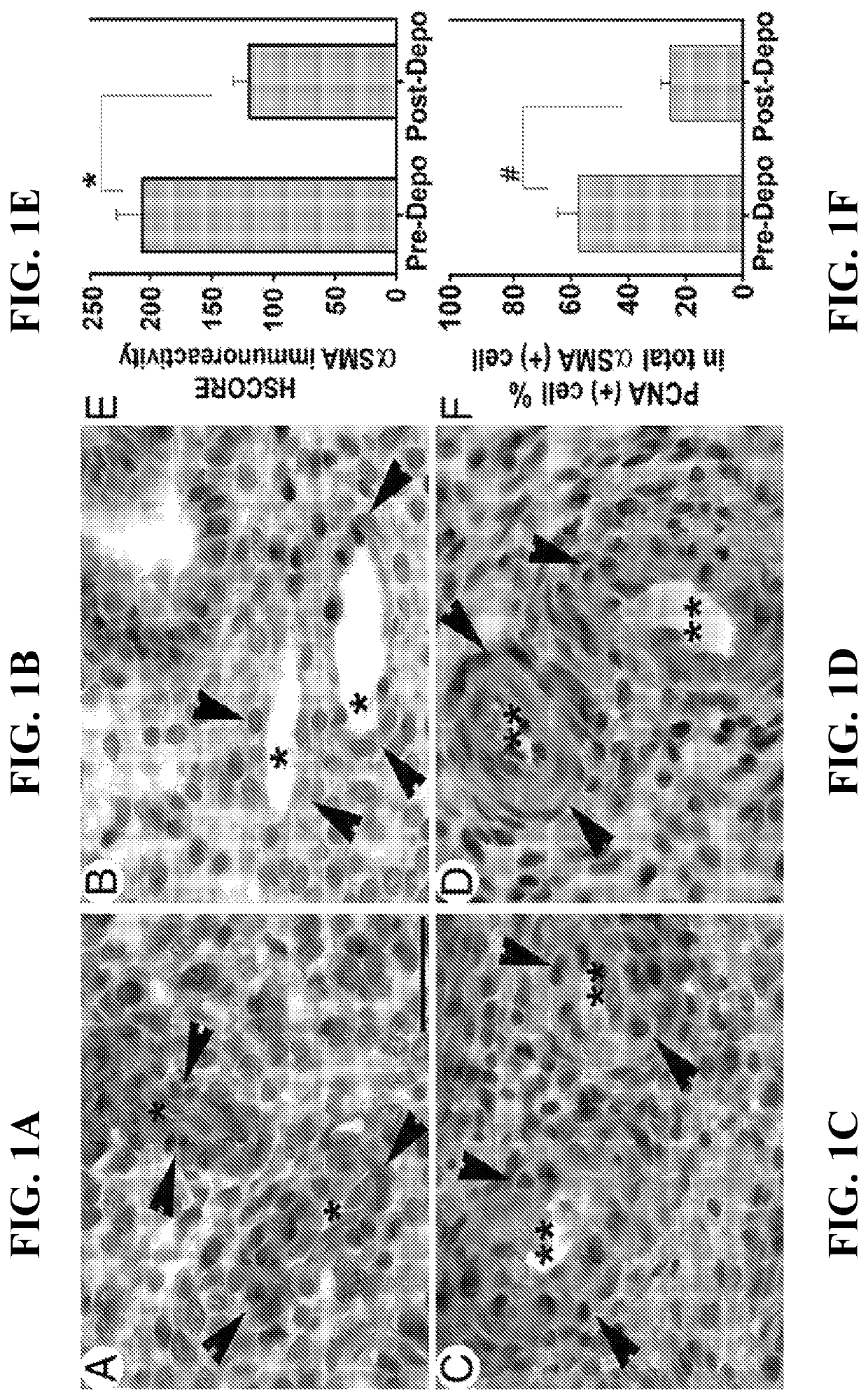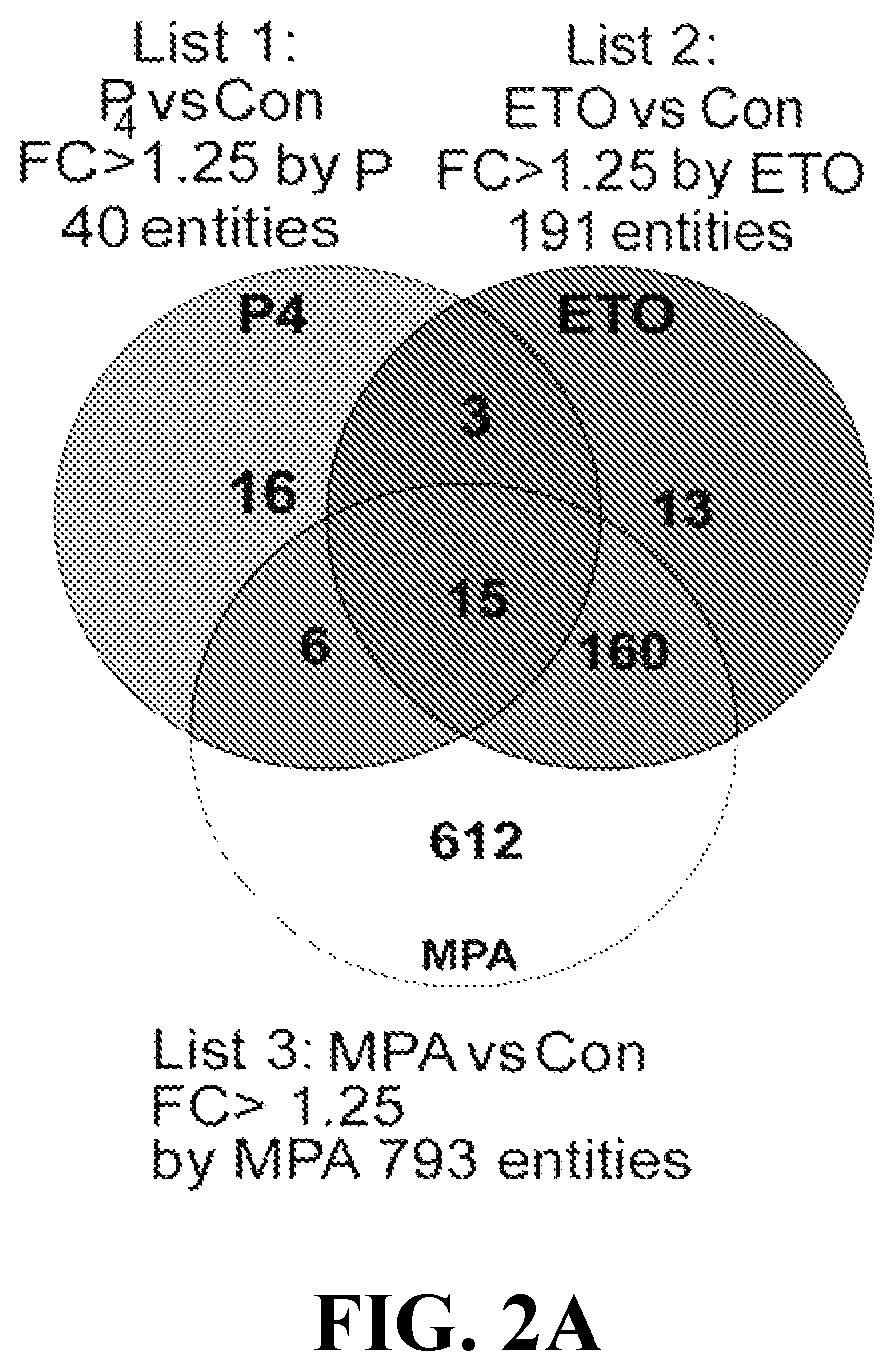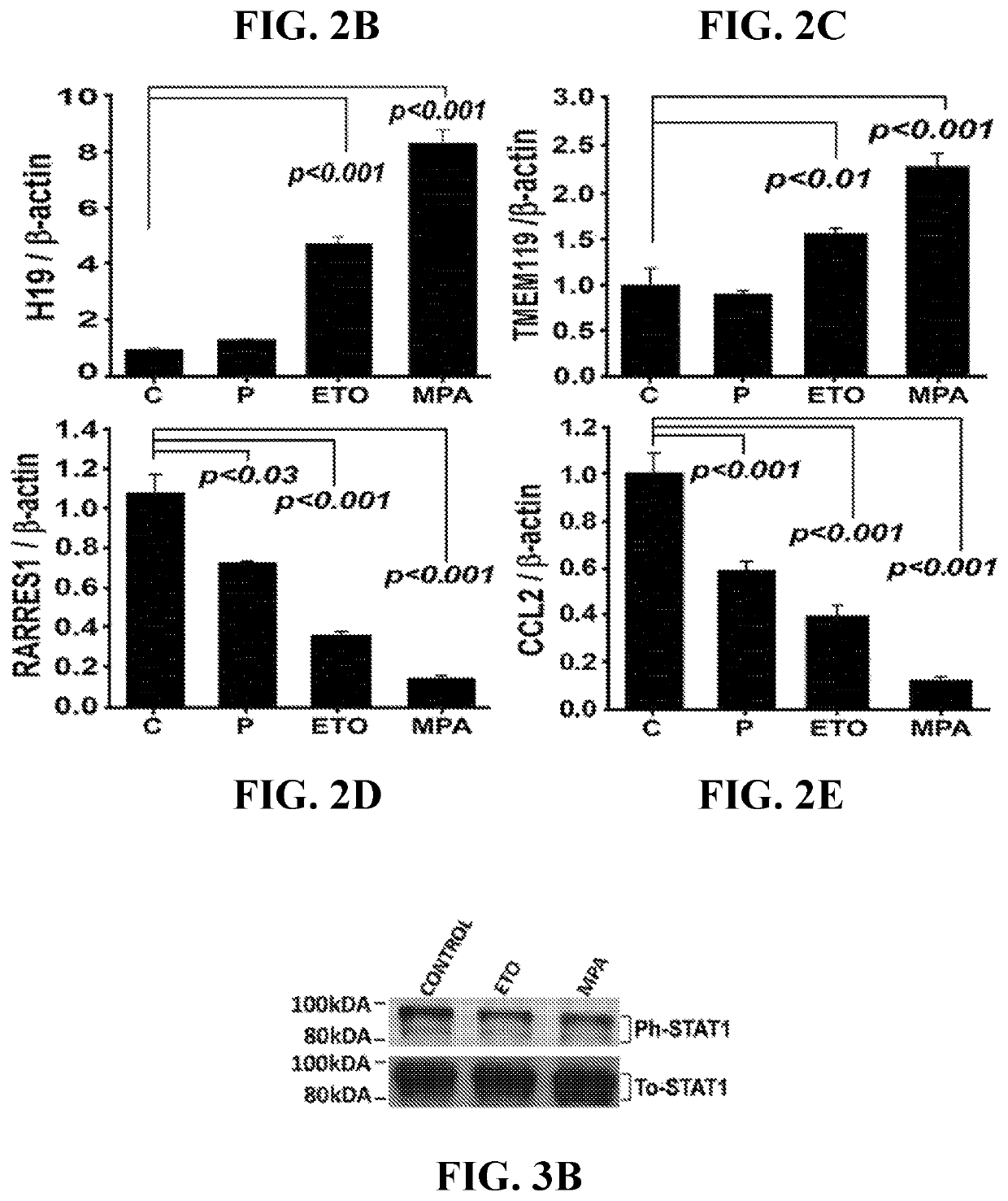Use of CCL2 to inhibit abnormal uterine bleeding
a technology of ccl2 and uterine bleeding, which is applied in the direction of sexual disorder, drug composition, peptide/protein ingredients, etc., can solve the problems of unpredictable, intermittent, abnormal uterine bleeding, etc., and achieve the effects of reducing proliferation, preventing or reducing lapc-induced aub, and impairing endometrial vascular integrity
- Summary
- Abstract
- Description
- Claims
- Application Information
AI Technical Summary
Benefits of technology
Problems solved by technology
Method used
Image
Examples
example 1
Endometrial VSMC Proliferation in Women Receiving Depo
[0099]VSMC numbers and proliferation index were evaluated in microvessels and spiral arteries of paired endometrial sections from women before and after Depo (injectable MPA) after double-immunostaining for αSMA and proliferating cell nuclear antigen (PCNA). Staining intensity and numbers of αSMA+ cells around microvessels (FIG. 1A vs. 1B) and spiral arteries (FIG. 1C vs. 1D) were lower in pre- vs. post-Depo-treated endometria (mean±SEM: 117.8±14.4 vs. 205.8±22.0, respectively; P<0.008) (FIG. 1E). The VSMC proliferation index was significantly lower in post-(FIGS. 1A and 1C) vs. pre-Depo endometria (FIGS. 1B and 1D) (24.7%±3.5 vs. 57.8%±6.9; P<0.003) (FIG. 1F).
example 2
lated Genes are Involved in VSMC Differentiation and Proliferation
[0100]Microarray analysis revealed that MPA and ETO altered transcription of 793 and 191 genes, respectively, in cultured VSMCs, whereas progesterone (P4) modified only 40 genes. (See complete microarray results at www.ncbi.nlm.nih.gov / geo / query / acc.cgi?acc=GSE55736 in the Gene Expression Omnibus repository using access no. GSE55736). Of 793 genes differentially regulated by MPA, 392 are up-regulated and 401 are down-regulated. Of 191 genes differentially regulated by ETO, 82 are up-regulated and 109 are down-regulated. Of 40 genes differentially regulated by P4, 18 are up-regulated and 22 are down-regulated. Tables 2-4 display the 40 most progestin-regulated genes. The Venn diagram displaying microarray data revealed that 612 genes are regulated solely by MPA, 13 solely by ETO, 16 solely by P4, and 15 genes by all three progestin (FIG. 2A). Of ETO-modulated genes, 92% (175) are also regulated by MPA (FIGS. 2B-2E) wit...
example 3
bition of VSMC Proliferation is Reversed by CCL2 Via STAT1 Signaling
[0105]In cultured VSMCs, 48-h treatment with MPA or ETO significantly reduced BrdU incorporation vs. control (mean±SEM 0.31±0.02 or 0.40±0.03 vs. 0.81±0.03 respectively; P<0.001), whereas P4 (0.71±0.05) was ineffective (FIG. 4A). In contrast, in parallel experiments, none of the progestins altered apoptosis (FIGS. 9A-1, 9A-2, 9B-1, 9B-2). To determine if inhibition of VSMC proliferation by MPA or ETO is mediated by decreased CCL2 expression, VSMCs were treated with vehicle or MPA or ETO±recombinant CCL2 (rCCL2) for 7 h. Compared with control (0.86±0.03), rCCL2 elicited a concentration dependent increase in BrdU incorporation (1.05±0.05 and 1.21±0.05, respectively; P<0.005) (FIG. 4C). Addition of 10 ng / mL rCCL2 reversed the inhibitory effects of MPA or ETO, whereas 100 μm MTA, a specific STAT1 inhibitor (19), abolished these rCCL2 effects (FIG. 4C).
PUM
 Login to View More
Login to View More Abstract
Description
Claims
Application Information
 Login to View More
Login to View More - R&D
- Intellectual Property
- Life Sciences
- Materials
- Tech Scout
- Unparalleled Data Quality
- Higher Quality Content
- 60% Fewer Hallucinations
Browse by: Latest US Patents, China's latest patents, Technical Efficacy Thesaurus, Application Domain, Technology Topic, Popular Technical Reports.
© 2025 PatSnap. All rights reserved.Legal|Privacy policy|Modern Slavery Act Transparency Statement|Sitemap|About US| Contact US: help@patsnap.com



